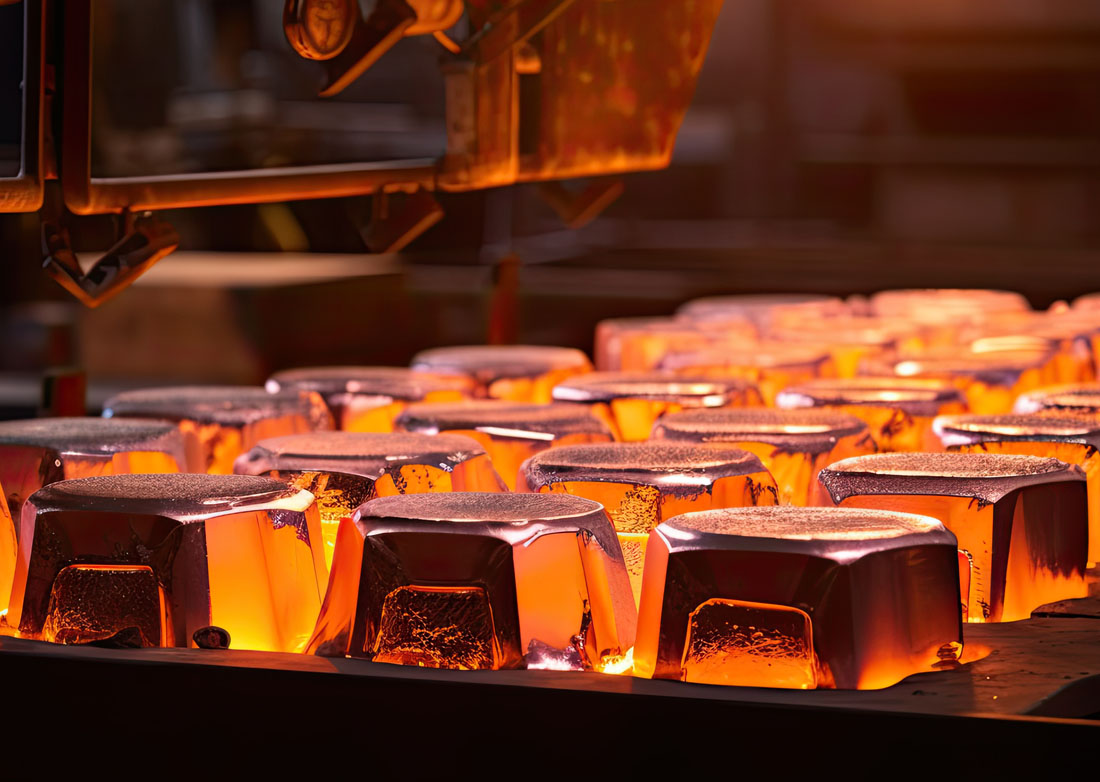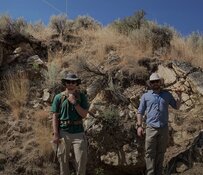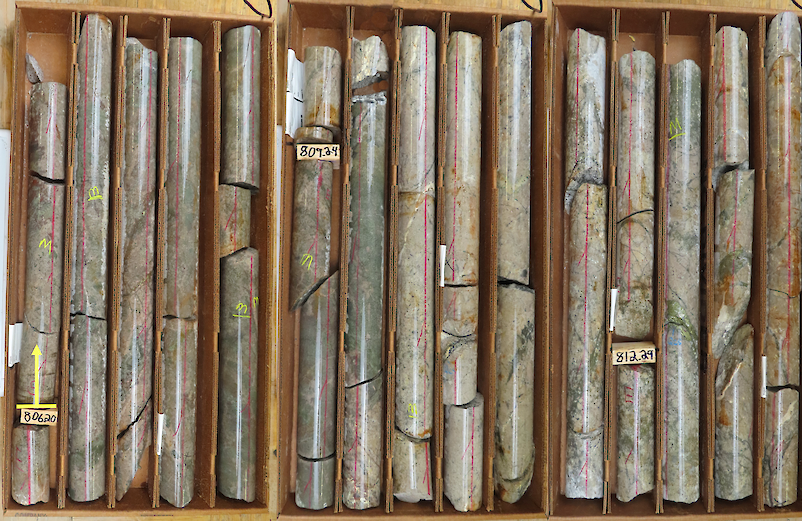Byron King: The focus of my visit was a massive physics experimental project known as the National Ignition Facility, or NIF. It uses laser beams to simulate the effects of almost incomprehensibly powerful phenomena like the inside of a star or the inside of a nuclear explosion.
NIF is a gigantic facility—almost as big as an aircraft carrier. It's a huge building filled with laser-beam systems that focus intense energy on tiny spots inside a 30-foot diameter target chamber. Essentially, the NIF lasers create hydrogen fusion, a sort of tiny hydrogen bomb. Scientists can use it to simulate fundamental physics issues down to the star-like levels of pressure and temperature on protons, neutrons and electrons in the nucleus of an atom. One of the key government purposes, if you will, is to calibrate instrumentation that tests nuclear weapons without actually setting them off. Projects at NIF push the envelope of our understanding of atomic physics. This has the potential to change our lives in ways that we can't even begin to understand. It's wide open.
Sitting here talking with you during the current government shutdown, it's easy to criticize government for being too big, too expensive, etc. But this kind of big science—like we see at NIF—can only be done through a dedicated, long-term, national government effort. In terms of pushing the fundamentals frontiers of human knowledge, I think it's worth the money we put into it.
TMR: It sounds like NIF could impact technology and energy in many ways. You call graphite the next industrial revolution. Why graphite, and why now?
BK: For most of human history, people have only used a very few materials: cellulose in the form of wood, cotton or other fibers, and metals like bronze, copper, lead and steel. Aluminum only came into widespread use in the early 20th century.
Since the end of World War II and the space race of the 1960s, we are using a larger variety of materials in our daily lives. Today, cell phones, TVs, even light bulbs are filled with all sorts of exotic materials.
I think the next big leap for fundamental material science will be in the field of carbon. This takes us immediately to graphite and what are called allotropes of carbon, such as graphite nanotubes and graphene.
One of the primary carbon raw materials will be a naturally occurring form called graphite. Humankind already uses lots of graphite. Consider what's called amorphous carbon, which you'll find in all manner of things—brake pads and pencils, for example. Flake graphite is a higher-end form of carbon; it comes in different grades. Small-flake graphite is only somewhat better than the amorphous stuff, with many of the same applications like brake pads and such. Large-flake graphite is critical to many modern applications. Examples include advanced storage batteries and the heat-conducting foil that dissipates the heat from your smartphone so you can hold it in your hand without getting burned.
We're barely into the early innings of the materials revolution using advanced forms of graphite.
TMR: Different types of graphite come with their own challenges. What are some of the differences among crystalline, amorphous, lump and vein graphite when it comes to mining it and processing it?
BK: People have been mining and using graphite for centuries. The root of the name is the Greek word graphein, which means to write. Someone in the ancient past figured out how to use this interesting mineral to make marks on a parchment.
But let's dwell on today, and not ancient Greece. People mine graphite all over the place these days, with China being a key world supplier. Gee, where have we heard that before, eh?
Unlike with, say, rare earths, mining and processing graphite isn't super technically advanced. With graphite mining, as with everything, you have what you have and not what you might wish you had. If you have really high-quality, large flake graphite, it makes it easier to mine but you have to be careful at the mouth of the mine not to crush the material too hard. If you handle it the wrong way, you'll destroy the very properties that you're seeking; you'll destroy the crystalline aspects that might make it most useful.
Natural graphite deposits differ from one locale to another. Mineralogical research seems to be showing that the deeper and the hotter the burial and the temperature at which the graphite forms, the better the crystallinity, and the more suitable it is for high-value end products.
Another angle is that the users—the firms that make batteries, electrical components or electrodes—all have their own secret chemistry for putting the graphite and other additives together into a component. It's very important for a mining player to work with the downstream users early on. That's what will make a project succeed. It's forming partnerships up front, with the downstream users.
TMR: You mentioned the importance of flake size. How much of a price difference can a company demand for large-flake graphite?
BK: Graphite has experienced big price swings in the last five years. A $500–600/ton price for lower quality material is just about the cost of production. Higher-quality material ranges from $1,500–2,000/ton. There has been very exotic, one-off, super-high-quality material that sold for 10 times that, although not just any company can build a mining model using a $20,000/ton price, which is exceptional.
TMR: What do you use as a standard price?
BK: To be very conservative, I look at numbers in the $1,250–1,500/ton range for really good, high-quality material at the 99.9% level.
I see rapid demand growth for material at that level, for use in batteries and foils and innovative uses in fire insulation and heat resistance.
Graftech International Holdings Inc. (GTI:NYSE) is an intriguing story. It makes carbon electrodes for steel mills, graphite foils for companies that make things like the iPad. GrafTech uses engineered graphite for fire proofing in a way that when fire gets to the graphite coating, the graphite will expand and form a char which insulates the substrate. That keeps the substrate from burning or if it's a metal, it keeps it from melting. If you can crack the building codes of the world and get a material like that approved as a fire insulator, you would have a multibillion-dollar market for graphite right there. It's a midstream or downstream user, a technology application. It buys its material from mines and material brokers who deal with miners.
TMR: As demand and use for things like insulation develops, when do you expect the graphite price to rise?
BK: Graphite prices, as well as many other metals, have had a tough 18–24 months, but I think we've found a bottom. I expect graphite prices to hold their own, if not increase in a gentle way. There is a market for good-quality material.
In the graphite world, it's interesting to note that we haven't seen a new mine open up outside of China in the last 25 years. There are precious few mine-building graphite plays out there. Many of the working mines are getting long in the tooth. It's time for mid- and downstream users to take a hard look at the life of those mines, how much reserve is left and where things can go from here.
TMR: What companies could fill the demand for graphite, and what type of graphite does each project have?
BK: Focus Graphite Inc. (FMS:TSX.V) has a very high-grade deposit in Lac Knife, Québec, on the border with Labrador, near Fermont. This graphite play was discovered several decades ago by miners looking for iron or gold. Focus has done a lot of drilling and defining the graphite ore body.
Focus is still developing its mine and processing capabilities, but management has built the company into more of a technology play on graphite. The company invested heavily in developing applications for graphite that involve other forms of carbon, such as graphene and nanotubes. Focus wants to create a branded, high-spec, high-tech product it can sell to downstream users looking for the high-end stuff.
If you want a down-to-earth company—so to speak—that's more of a traditional graphite miner, take a look at Energizer Resources Inc. (EGZ:TSX.V; ENZR:OTCQX). Its deposit is on the island of Madagascar. The deposit is so extensive that you can see it from space on satellite photographs. It originated deep underground and was heated to high temperatures 400 million (400M) years ago. Now it's all large-flake graphite—and I mean beautiful mineralogy!—exposed at the surface.
When I visited, we drove for miles across the scrub of southern Madagascar. The tires kicked up graphite dust. You could do geologic mapping by looking at the termite mounds. The gray mounds were graphite, the brown ones weren't. It's very mineable. In terms of strip ratio, there's virtually no waste.
Energizer has put together plans for a mining and processing facility, logistics, transport and shipping. The company recently hired two well-known mine builders. The company has had successful bench-scale testing and is building a pilot plant to demonstrate the processing capabilities of the material. The next step is to get together with mid- and downstream users, to understand their needs. Madagascar is far away if you look at the map from North America, but it's also that much closer to major markets in India and East Asia. Plus, Madagascar has a stable government and is relatively mining friendly. Rio Tinto Plc (RIO:NYSE) and Sherritt International Corp. (S:TSX) have operations there.
TMR: Energizer's new CEO and board are talking to potential offtake partners for its Molo graphite project. Is an offtake deal the next expected catalyst?
BK: The next announcement will probably be about the pilot project, probably around the end of November. A deal with offtake users is the next logical step in the company's development.
Considering the size of the deposit, the quality of the material, the lead time involved in making the arrangements and commitments on something this big, there isn't a lot of time for any grass to grow beneath anybody's feet.
Focus and Energizer are two of the most advanced, most attractive graphite mining plays in terms of their ability to deliver product to an end user that can then add more value to it.
TMR: Some people are saying that synthetic graphene might be more practical than graphene made from graphite. How much demand could be created and how quickly by some of these innovative, but still not very commercial, products being discussed?
BK: Graphene and nanotubes are already finding their way into very high-end, high-spec, high-tech applications. At the NIF, for example, the little targets that they shoot the laser beam at are made of diamond. The laser scientists are thinking about replacing the diamond with nanotubes. That's a truly exotic application, but it tells you that these materials are finding their ways into the most interesting places.
There are many very aggressive R&D projects out there for the use of graphene in things like touch screens on personal digital devices. One of the largest patent holders on graphene applications is IBM Corp. The fact that IBM holds a very large patent portfolio on graphene ought to make you feel warmer and fuzzier about this whole arena.
I think we will see nanotube, graphene and other carbon allotropes coming from both ends. It's like you're building a brick wall held together by mortar. The brick would be the nanotubes or the graphene that comes from the natural graphite. The bonding or "healing" process would be with a process called chemical vapor deposition (CVD), which is like the mortar that holds bricks together.
Right now, graphene and nanotubes can be manufactured using CVD. This is a well-known technique used in the computer chip fabrication industry. One example is CVD Equipment Corp. (CVV:NASSDAQ) of Long Island, New York, which makes very high-end fabrication equipment for CVD applications. The CVD customer list is a who's who of scientific research organizations: I mean research universities, national laboratories like Oak Ridge and Livermore, big industrial corporations like IBM, Pratt & Whitney, Advanced Micro Devices (AMD:NYSE) and KLA-Tencor Corporation (KLAC:NASDAQ).
CVD makes equipment that deposits graphene and nanotubes on a substrate. This gets us closer to mass production of a very complex, nano-scale product with unbelievably high tolerances. Mass production drives down the unit cost, which means you can start to put this nanotube or graphene material into more applications. It's important to devise a way to produce larger amounts of high-quality material at a predictable cost, so designers can create items that use these materials.
TMR: What other companies could supply some of this graphite?
BK: In terms of minerals in the ground, we have to mention Zenyatta Ventures Ltd. (ZEN: TSX.V), which has had a remarkable share price run in the last year or so. The company drilled up a couple of geophysical anomalies and found a remarkable graphite-based material that appears to be quite a scientific curiosity. While the stock has had a great price run, this remains a very early-stage idea with a lot of development work left to do.
Mason Graphite Inc. (LLG:TSX.V) has the Lac Guéret deposit in Québec, a discovery of fairly recent vintage. It was discovered as a graphite deposit, unrelated to any gold or iron exploration. The grade of the ore appears to be even better then Focus' project. Where Mason can go with this is wide open, but the company definitely has the right materials to start with. It's possible that the high grade could lead to much higher purities and higher prices. That would benefit the bottom line, because it would allow the company to sell high-end product out of the mill, and capture premium pricing sooner in the value chain.
TMR: Let's shift over to platinum and palladium. Is the ongoing strike at Anglo American Plc (AAUK:NASDAQ) in South Africa making projects outside of Africa more viable?
BK: Anything that diminishes the South African supply of platinum and palladium is generally good for pricing around the world, although it does make supply more problematic.
September and October tends to be a season for strikes in South Africa. Last year, strikes got very violent and people died. That was very bad for South Africa's political risk profile. This year we've seen strikes, but the overall climate hasn't been as violent. Anything that affects the labor climate and the output from any of the major South African platinum mines will affect world supply.
One key point to keep in mind is that we're still dealing with the effects of the unending recession. We've got the China slowdown, the Japan doldrums, the Eurozone issues, the slowdown in other developing nations like Brazil and of course the issues in the U.S.
On the positive side, at least in a global sense, the automobile industry is doing very well. North American auto sales are up to nearly the pre-crash levels of five years ago. People are buying big cars; SUVs and pickup trucks are rolling off the lines as fast as the makers can build them. Every one of those vehicles has a catalytic converter installed on its engine exhaust system. The rebound in auto sales has to feed back to the demand for platinum and palladium for those catalytic converters. If the European automobile market ever starts to recover, it could be another real kicker for platinum and palladium prices.
TMR: Are there any projects outside of Africa that could fill that demand?
BK: There are only a couple of small players outside of Africa.
I like the management and early-stage work being done by Prophecy Platinum Corp. (NKL:TSX.V; PNIKF:OTCPK; P94P:FSE). It has an intriguing project up in the Yukon north of Skagway, Alaska, which would be the company's shipping port.
We won't see a mine there for several years. Meanwhile, management is doing good work revitalizing an old platinum play that operated in the 1970s and '80s. It closed for several reasons, but lack of ore was not one of them.
Yukon is a mining-friendly jurisdiction, and because the Prophecy mining claims are in the rain and snow shadow of the Chugach mountain range of Alaska, it gets relatively little snowfall. It could operate year-round. You move the product across the border to the U.S. and export out of Alaska. The company has good geology and good management. It's all very doable.
TMR: That's one to watch. Any others?
BK: Platinum Group Metals Ltd. (PTM:TSX; PLG:NYSE.MKT), a South African play, has made great progress. The deposit is in a sweet spot of the old Bushveld complex, where the company has discovered entire new zones—to the degree that the geology books on the Bushveld almost need to be rewritten. The company is finishing up a brand-new mine, scheduled to start producing ore in 2014. Platinum Group Metals will deliver ore with excellent grades from a brand-new mine with all modern safety equipment and production technology.
TMR: Should all of that help with the labor issues?
BK: I think the company has its labor issues under control. It doesn't have any legacy issues of mine pit alumni or government meddling. It's new.
TMR: Last time you talked about recycling. Does that remain a viable option for meeting demand?
BK: Oh, yes. Recycling, in particular recycling catalytic converters, is an important option. I've mentioned Pro-Or Inc. (POI:TSX.V) before. Its pilot plant has been up and running in Quebec for eight or nine months with excellent output. It seems to have a very workable chemical process, with astonishing yields and a cost curve to make grizzly old miners weep. Pro-Or is now raising funds to build more, similar reactors to improve the technology and the process.
In the U.S. and Canada, 12M or more catalytic converters are scrapped every year. Right now almost all of them are exported to Japan or South Africa, and we buy them back at full price on the showroom floor. Pro-Or offers a technological option that allows that recycling value chain to occur here in North America. The materials would stay in the North American market and we could keep that added value inside the U.S. and Canadian economies.
TMR: When could that new plant be operational?
BK: Depending on the fundraising, it could be operational in 2014. The people who run Pro-Or could crank these reactors out pretty fast if the tech took hold.
TMR: What will the world look like twenty, thirty years from now? What commodities will be critical? And what can we invest in that will make the world a better place for the long term?
BK: We're going to see absolute transformations in energy use and energy efficiency. No, we'll never defeat the laws of thermodynamics, but it will take less and less energy to do many of the things that we already take for granted today. Energy conversion levels will be much higher. Prices will fall for the technology, and it'll become more and more available to a mass market.
Materials will change, including the strength of materials. We will still use cars, but they will be stronger and more lightweight. Actually, in the future, I think the cars will be driving us. Also, the devices we carry around in our hands will get even smaller. Some communications technology might get small enough to be implanted in your skin. People will become walking specimens of technologically enhanced humanity—a more pleasant form of the Borg, of Star Trek fame, you might say.
Along the way, we have to convince our children and teenagers to study math, science and foreign languages. People who don't understand these subjects will be on the outside of the economy looking in. That is, if you can only do certain basic things, you are destined to be replaced by a robot. If you can work with other people and enhance the technology that's already there, then there's a place for you.
That's my happy version of the future. There's plenty of room for apocalyptic thinking as well. Just as technology allows more people to do good things with greater efficiency, it also allows bad people to do more bad things with greater efficiency.
TMR: Let's hope that your happy version is the one that plays out. Byron, thanks for your time and insights.
Byron King writes for Agora Financial's Daily Resource Hunter. He edits two newsletters: Energy & Scarcity Investor and Outstanding Investments. He studied geology and graduated with honors from Harvard University, and holds advanced degrees from the University of Pittsburgh School of Law and the U.S. Naval War College. He has advised the U.S. Department of Defense on national energy policy.
Want to read more Metals Report interviews like this? Sign up for our free e-newsletter, and you'll learn when new articles have been published. To see a list of recent interviews with industry analysts and commentators, visit our Metals Report homepage.
DISCLOSURE:
1) JT Long conducted this interview for The Metals Report and provides services to The Metals Report as an employee. She or her family own shares of the following companies mentioned in this interview: None.
2) The following companies mentioned in the interview are sponsors of The Metals Report: Prophecy Platinum, Pro-Or Inc., Mason Graphite Inc. and Energizer Resources Inc. Streetwise Reports does not accept stock in exchange for its services or as sponsorship payment.
3) Byron King: I or my family own shares of the following companies mentioned in this interview: None. I personally am or my family is paid by the following companies mentioned in this interview: None. My company has a financial relationship with the following companies mentioned in this interview: None. I was not paid by Streetwise Reports for participating in this interview. Comments and opinions expressed are my own comments and opinions. I had the opportunity to review the interview for accuracy as of the date of the interview and am responsible for the content of the interview.
4) Interviews are edited for clarity. Streetwise Reports does not make editorial comments or change experts' statements without their consent.
5) The interview does not constitute investment advice. Each reader is encouraged to consult with his or her individual financial professional and any action a reader takes as a result of information presented here is his or her own responsibility. By opening this page, each reader accepts and agrees to Streetwise Reports' terms of use and full legal disclaimer.
6) From time to time, Streetwise Reports LLC and its directors, officers, employees or members of their families, as well as persons interviewed for articles and interviews on the site, may have a long or short position in securities mentioned and may make purchases and/or sales of those securities in the open market or otherwise.




































